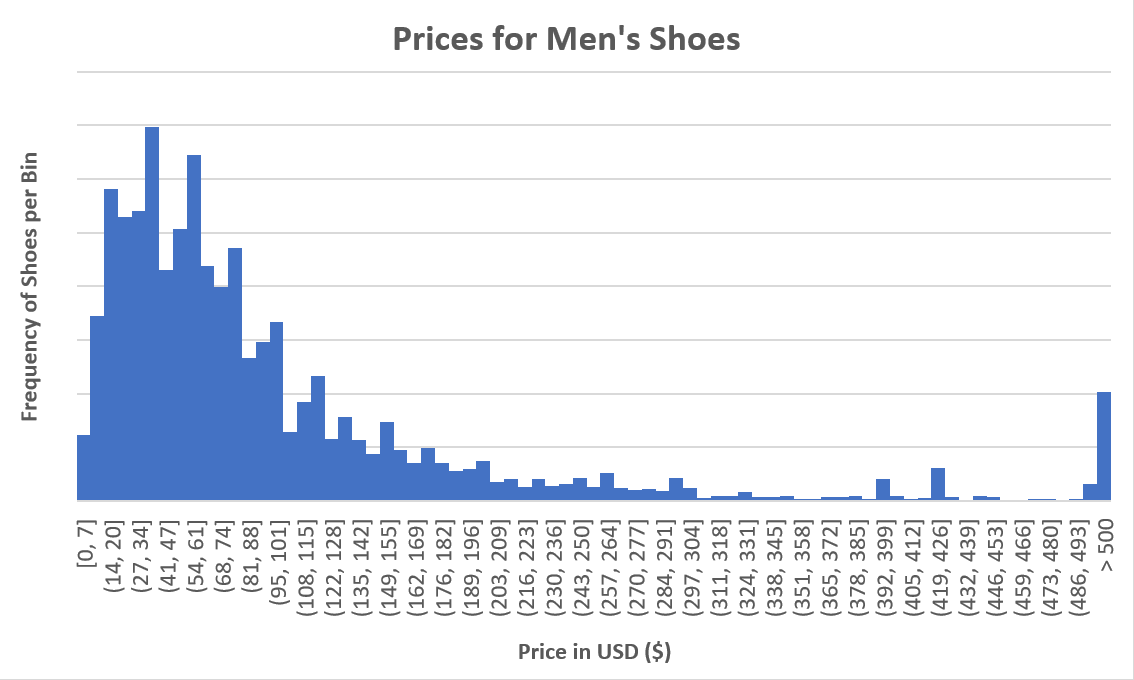
- HOW TO CREATE HISTOGRAM IN EXCEL MAC FOR FREE
- HOW TO CREATE HISTOGRAM IN EXCEL MAC HOW TO
- HOW TO CREATE HISTOGRAM IN EXCEL MAC INSTALL
- HOW TO CREATE HISTOGRAM IN EXCEL MAC DOWNLOAD
- HOW TO CREATE HISTOGRAM IN EXCEL MAC WINDOWS
Select this check box to create a bin for all values below or equal to the value in the box to the right. To change the value, enter a different decimal number in the box. Select this check box to create a bin for all values to a higher place the value in the box to the right. The bin width is calculated using Scott’s normal reference dominion.Įnter a positive decimal number for the number of data points in each range.Įnter the number of bins for the histogram (including the overflow and underflow bins). This is the default setting for histograms. Tip:To count the number of appearances for text strings, add a cavalcade and fill information technology with the value “1”, then plot the histogram and set the bins to The histogram will grouping the same categories and sum the values in the value axis. Use the information in the post-obit table to decide which options you desire to fix in theĬull this option when the categories (horizontal centrality) are text-based instead of numerical. Sitemap Page was generated in 0.Right-click the horizontal axis of the chart, click
HOW TO CREATE HISTOGRAM IN EXCEL MAC HOW TO
How to Change Default Browser on Windows, Mac, iPhone, and Android.10 Best Sleep Meditation Apps for Bedtime.
HOW TO CREATE HISTOGRAM IN EXCEL MAC WINDOWS
HOW TO CREATE HISTOGRAM IN EXCEL MAC FOR FREE
HOW TO CREATE HISTOGRAM IN EXCEL MAC INSTALL
HOW TO CREATE HISTOGRAM IN EXCEL MAC DOWNLOAD

These capture all scores over and under a specified value. In Excel, you can also specify the number of bins, which includes optional so-called overflow- and underflow- bins. You can also choose to leave it to an automatic function in Excel, where it will try to decide on a bin width that’s best suited to your data. Spend some time considering how you’d like to divide scores into bins and whether the histogram will paint the picture you’re looking for if you decide on a particular “bin width”.

However, for other types of data you have to invent the bin ranges. So you could arrange your bins to coincide with those. In the case of test scores, you’re in luck since there are already “bins” in the form of grade symbols. That’s a finely-grained distribution, but it’s probably not all that useful. However, that means 100 bars in your histogram. If you’re going to look at the frequency of scores between 0 and 100, you could have 100 bins, one for each possible score. The problem is that these may be arbitrary. You need to decide on the “bins” that your frequency counts will be sorted into. If you wanted to compare the frequency distributions between two groups on a single variable, you’d need multiple histograms. For example, if you only wanted to look at the weight distribution of a certain age group or gender, you should only include data for that group. Be careful not to mix the data from groups you don’t want to measure together into one histogram. For example, if you have the weights of a group of people, you’d have each measured weight recorded in your dataset. The first requirement is fairly straightforward. A set of measurements for a single variable.In order to make a histogram, you need a few things: Those tests still use histograms as a basis though and creating and observing a histogram is a crucial first step in showing you roughly what sort of distribution you may be dealing with. Of course, if you really want to determine whether your frequency distribution is normal or not, you’d run a normality test in Excel on your data.


 0 kommentar(er)
0 kommentar(er)
